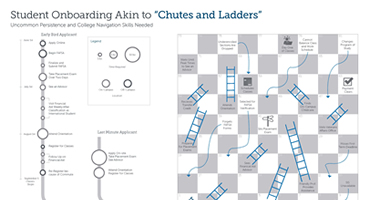NCES Releases New Analysis on College Enrollment by Views on College Affordability
Title: College Affordability Views and College Enrollment
Source: National Center for Education Statistics (NCES)
The National Center for Education Statistics (NCES) recently released a new analysis about high school students’ views on college affordability and their enrollment in college.
A nationally representative group of high school juniors were asked to indicate the extent to which they agree with the following statement during the 2012 survey year: “Even if you get accepted to college, your family cannot afford to send you.” At that time, one-third of the respondents “agreed” or “strongly agreed.” NCES followed up the students’ status in February 2016, three years after high school.
Key findings from the analysis:
- Fifty-eight percent of students who answered their family could afford to send them to college were enrolled in college, while only 38 percent of students who answered their family could not afford college were enrolled in February 2016.[1]
- Students who thought their parents could not afford college were more likely to be employed three years after high school (43 percent) than students who thought their family could afford college (32 percent).
- Students who saw affordability as a barrier were more likely to be disconnected from both college and employment three years after high school (20 percent), compared to their counterparts who indicated their ability to afford college (10 percent).
- In addition, among students who answered their family could not afford college, those whose parents had lower levels of education were less likely to attend college, compared to those whose parents had higher levels of education.
The report states that students’ views on college affordability may be associated with decisions to apply to college, even though the view is one of the various factors that shape their paths to enrollment.
Click here to read the full report and access supplemental findings.
—Ji Hye “Jane” Kim
[1] The report noted that some students who were not enrolled in 2016 had attended some college and left or completed a degree.
If you have any questions or comments about this blog post, please contact us.


